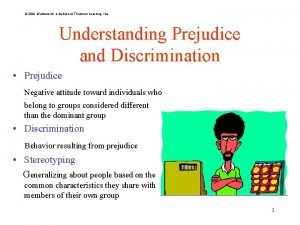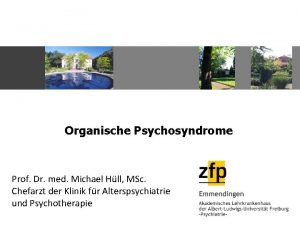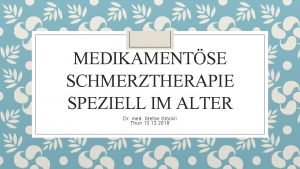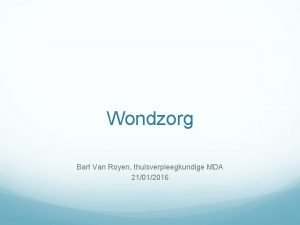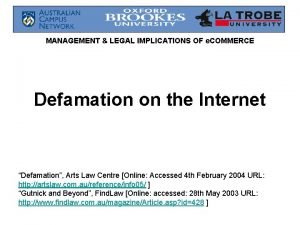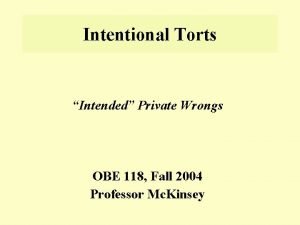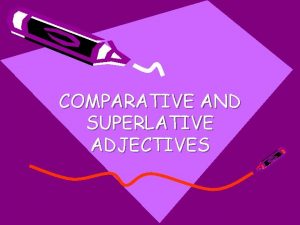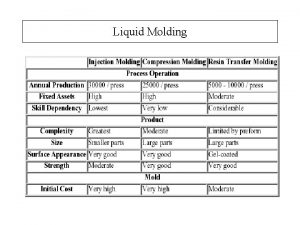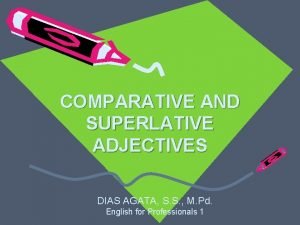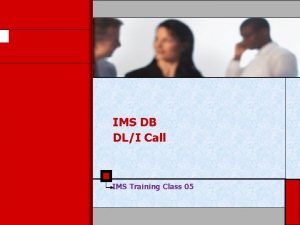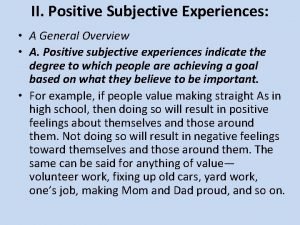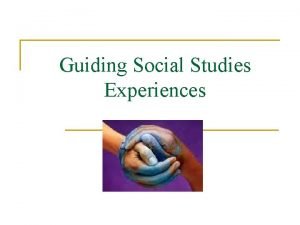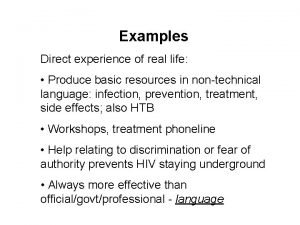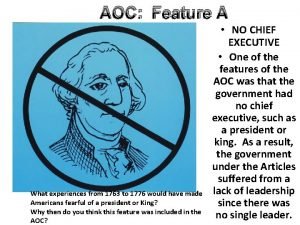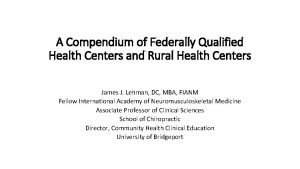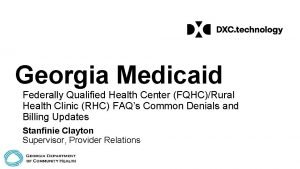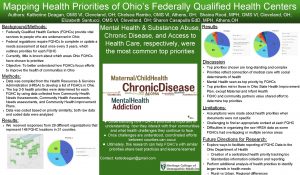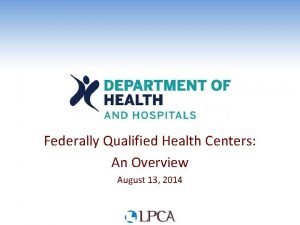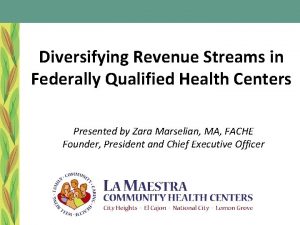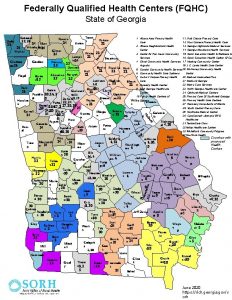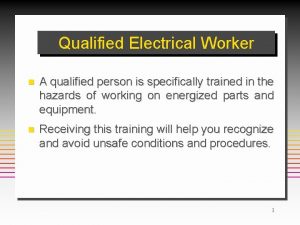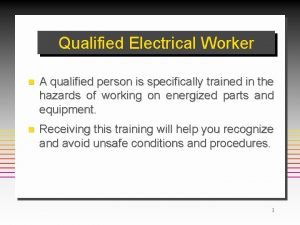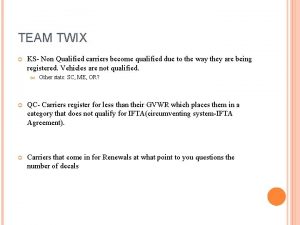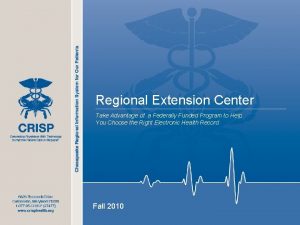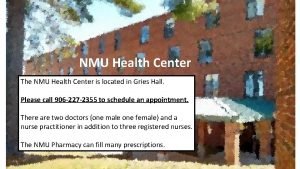A Compendium of Federally Qualified Health Center Experiences



























































- Slides: 59

"A Compendium of Federally Qualified Health Center Experiences: The Connecticut Experiences. " James J. Lehman, DC, FACO Associate Professor of Clinical Sciences University of Bridgeport College of Chiropractic Director, Community Health Clinical Education University of Bridgeport

Learning Objectives • First hour • Realize the steps necessary to integrate chiropractic services into a Community Health Center/FQHC • Second hour • Comprehend the differential diagnosis and prognosis for a patient suffering with chronic pain syndrome vs chronic pain illness.




Primary Care 2025 Predictions • The resulting policies accelerated the evolution of PCMHs into CCHHs, which provide primary care to 85% of the population. • This care is fully capitated in 2025. • About 10% of the population receives fee-for-service (FFS) “concierge” care aimed at the very rich, who have insurance but pay additional fees for special services; 5% of the population remains uninsured in 2025 and gets primary care, if and when they get it, from emergency rooms and community health centers (CHCs). • Institute for Alternative Futures. Primary Care 2025: A Scenario Exploration. Alexandria, VA. January 2012. Available from http: //www. altfutures. org/pubs/pc 2025/IAF-Primary. Care 2025 Scenarios. pdf.




Barriers to Entry and Chiropractic Integration • Medicaid covered 60% of CHC patients • Medicaid in Connecticut was not funded to cover chiropractic services

Barriers to Entry and Chiropractic Integration • Primary care providers were the gatekeepers in CHC primary care sites • Primary care providers had never referred to a chiropractor (1972) • Primary care providers expressed significant concerns regarding use of chiropractors

Credentialing • In order to be credentialed as members of the medical staff, chiropractors were required to be chiropractic specialists.



Community Health Center Pilot Study • Nine (9) months in Meriden Primary Care facility • PCPs to refer adult patients with chronic pain • One UBCC, DC faculty member to provide care and supervise students • Teams of (3) fourth-year, chiropractic students provided hands-on treatment • Determine change in functionality, referral pattern changes, patient and provider satisfaction

Pilot Study Outcomes • PCPs referred adult, chronic pain patients • 98. 5% patient satisfaction • High level of provider satisfaction • Statistically significant improvement in functionality

Following a six-month pilot study, the Community Health Center, Inc. of Middletown, Connecticut accepted boardcertified chiropractic specialists to the medical staff.

Community Health Center Tasks • Petition HRSA to expand scope of practice and scope of reimbursement to include chiropractic services for Medicaid patients • Petition Connecticut to pay CHC for Medicaid patients receiving chiropractic services

Community Health Center Tasks Education

Community Health Center Tasks Chiropractic Credentialing

Community Health Center Tasks Chiropractic Privileges

Integration • Chiropractic specialists were credentialed as members of the medical staff with evaluation and management privileges plus specific chiropractic services.

Chiropractic Integration • Full access and use of the electronic medical record

Chiropractic Integration • Seamless referral process, which reduces stress for patients


Chiropractic Integration Outcomes • Increased referrals to chiropractic providers • Reduced referrals to orthopedic surgeons • Increased patient satisfaction • Chronic pain patients experienced improved function • Reduced use of opioids • Primary care provider satisfaction with chiropractic services

Neuromusculoskeletal Conditions Treated • Acute and chronic pain: Spinal pain Cervicogenic headaches Myofascial pain syndromes Piriformis syndrome and sciatica Nerve root radiculopathy and brachial plexopathy • Peripheral compression neuropathies • Coccygodynia • • •

Chiropractic Services Procedures • Spinal and extremity manipulation • Soft tissue treatments • Physiological therapeutics

Chiropractic Services • Prevention and Wellness • • Smoking cessation Nutrition and hydration Specific exercise programs Posture

Primary Diagnostic Codes • G 89. 4 Chronic Pain Syndrome • G 89. 21 Chronic Pain Post-traumatic • G 89. 11 Acute Pain Post-traumatic

Billing and Coding • E/M • 99213 Intermediate evaluation and management of established patient • CPT • • 98940 CMT spinal 1 -2 regions 98941 CMT spinal 3 -4 regions 98943 CMT extra spinal 97140 Manual therapy techniques (soft tissue treatments)

Patient Comments • I like the chiropractor because now I know what is wrong. • The chiropractors make me feel better. • I don’t want to take the drugs anymore. • We need more chiropractors!

Patient Outcomes • Reduced use of opioids • Improved quality of life • Patient satisfaction • Provider satisfaction • Improved function

• “We have found that the integration of chiropractic services enabled our patients to experience less pain and promoted healthy living. Hopefully, other community health centers in Connecticut and across the country will use our model to reduce chronic pain and improve quality of life. ” Margaret Flinter, Ph. D. Senior Vice President and Clinical Director Community Health Center, Inc.

Chiropractic Specialty Training • Selected Neuromusculoskeletal Medicine training

Chiropractic Specialty Training • 300 -hour program for practicing chiropractors • 50 hours of live, seminar training • 250 hours of Advanced Online Clinical Training

UNIVERSITY OF BRIDGEPORT RESIDENCY IN NEUROMUSCULOSKELETAL MEDICINE

Chiropractic Specialty Training • Three-year, full-time residency • Primary care sites • Credentialed as a member of the medical staff of an FQHC/Community Health Center • Function as a chiropractic specialist on a primary care team

Chiropractic Specialty Training • Board Certification with the Academy of Chiropractic Orthopedists

Differential Diagnosis Chronic pain syndrome vs chronic pain illness

Chronic Pain • Chronic pain—commonly defined as pain persisting longer than six months—affects an estimated 70 million Americans and is a tragically overlooked public health problem. • The burden of chronic pain is greater than that of diabetes, heart disease and cancer combined. • Ongoing pain can also undermine overall physical, psychological, and social well-being, and is a major cause of disability and costly health care utilization. • A Call to Revolutionize Chronic Pain Care in America: An Opportunity in Health Care Reform

Chronic pain (syndrome) is pain that occurs on at least half the days for six months or more (2016).

Inadequate Pain Treatment • Currently, large numbers of Americans receive inadequate pain prevention, assessment, and treatment, in part because of financial incentives that work against the provision of the best, most individualized care; unrealistic patient expectations; and a lack of valid and objective pain assessment measures. • A Call to Revolutionize Chronic Pain Care in America: An Opportunity in Health Care Reform


Chronic Pain and Central Sensitization • Central sensitization is a condition of the nervous system that is associated with the development and maintenance of chronic pain. • When central sensitization occurs, the nervous system goes through a process called wind-up and gets regulated in a persistent state of high reactivity. • This persistent, or regulated, state of reactivity lowers the threshold for what causes pain and subsequently comes to maintain pain even after the initial injury might have healed. • Phillips, K. & Clauw, D. J. (2011). Central pain mechanisms in chronic pain states – maybe it is all in their head. Best Practice Research in Clinical Rheumatology, 25, 141 -154.

Chronic Pain and Central Sensitization • Sensory Function Disturbances • Hypersensitivity (decreased pain threshold) to pressure, thermal, electrocutaneous • Spinal cord hypersensitivity (central sensitization) • Sterling M, Kenardy J. Physical and psychological aspects of whiplash: Important considerations for primary care assessment. Man her. 2008; 13: 93 -102.

Chronic Pain Illness • Most people in pain, including those with chronic symptoms, go to primary care providers to get relief. • But current systems of care do not adequately train or support internists, family physicians and pediatricians, the other health care providers who provide primary care in meeting the challenge of treating pain as a chronic illness. • A Call to Revolutionize Chronic Pain Care in America: An Opportunity in Health Care Reform

• Supports the development of a system of patient-centered integrated pain management practices based on a biopsychosocial model of care that enables physicians and patients to access the full spectrum of pain treatment options…

Chronic Pain Illness

Chronic Pain Syndrome • Pain occurs on 4 days per week for more 6 months or longer • Appropriate care following injury • Higher level of education • Control of employment • Low to moderate pain scale scores • Coping skills • Short- term disability • Properly insured

Post-traumatic Chronic Pain Illness • Pain on a daily basis for more than 6 months • Inappropriate care or delayed care following injury • Lower level of education • Loss of minimum wage job(s) • Extremely high pain scale scores • Emotionally charged • Disability

Psychological Factors and Chronic Pain Illness • Affective disorders • Anxiety • Depression • Behavioral abnormalities (fear of movement) • Posttraumatic stress

Pain management by primary care physicians, pain physicians, chiropractors, and acupuncturists: a national survey. Breuer B 1, Cruciani R, Portenoy RK. South Med J. 2010 Aug; 103(8): 738 -47. • OBJECTIVES: • Chronic pain is a serious public health problem and is treated by diverse health care providers. In order to enhance policies and programs to improve pain care, we collected information about the distribution of pain patients among four major groups of pain management providers: primary care physicians (PCPs), pain physicians, chiropractors, and acupuncturists, and the variation in the attitudes and practices of these providers with respect to some common strategies used for pain. • METHODS: • National mail survey of PCPs, pain physicians, chiropractors, and acupuncturists (ntotal = 3, 000). • RESULTS: • Eight hundred seventeen responses were usable (response rate, 29%). Analyses weighted to obtain nationally representative data showed that PCPs treat approximately 52% of chronic pain patients, pain physicians treat 2%, chiropractors treat 40%, and acupuncturists treat 7%. Of the chronic pain patients seen for evaluation, the percentages subsequently treated on an ongoing basis range from 51% (PCPs) to 63% (pain physicians). Pain physicians prescribe longacting opioids such as methadone, antidepressants or anti-convulsants, and other nontraditional analgesics approximately 50 -100% more often than PCPs. Twenty-nine percent of PCPs and 16% of pain physicians reported prescribing opioids less often than they deem appropriate because of regulatory oversight concerns. Of the four groups, PCPs are least likely to feel confident in their ability to manage musculoskeletal pain and neuropathic pain, and are least likely to favor mandatory pain education for all PCPs.

Interdisciplinary team… • Ideally, most patients with severe persistent pain would obtain pain care from an interdisciplinary team, as opposed to a specialist who might focus on a narrow range of treatments and have a restricted view of how pain is affecting the patient.

Primary Care Team • In the primary care setting, the team most often includes a primary care practitioner, nurse, and mental health clinician but should include chiropractic specialists.


Chronic Pain Illness Response to Chiropractic Care • Temporary pain reduction (1 -3 days) from 10/10 to 8/10 • Rates improvement at 50% of 100% • Claims that treatment improves Quality of Life (QOL) • Reduces ER visits • Reduces need for drugs • Normally, treatment frequency is 1 -4 times per month for life

American Society of Addiction Medicine 1. Addiction is a primary, chronic and relapsing brain disease characterized by an individual pathologically pursuing reward and/or relief by substance use and other behaviors. American Society of Addiction Medicine. (2011). Public Policy Statement: Definition of Addiction. Chevy Chase, MD: American Society of Addiction Medicine. 2. In 2012, 259 million prescriptions were written for opioids, which is more than enough to give every American adult their own bottle of pills. Centers for Disease Control and Prevention. (2014). Opioid Painkiller Prescribing, Where You Live Makes a Difference. Atlanta, GA: Centers for Disease Control and Prevention. Available at http: //www. cdc. gov/vitalsigns/opioid-prescribing/. 3. Four in five new heroin users started out misusing prescription painkillers. Jones CM. Heroin use and heroin use risk behaviors among nonmedical users of prescription opioid pain relievers - United States, 2002 -2004 and 2008 -2010. Drug Alcohol Depend. 2013 Sep 1; 132(1 -2): 95 -100. 4. 94% of respondents in a 2014 survey of people in treatment for opioid addiction said they chose to use heroin because prescription opioids were “far more expensive and harder to obtain. ” Cicero TJ, Ellis MS, Surratt HL, Kurtz SP. The changing face of heroin use in the United States: a retrospective analysis of the past 50 years. JAMA Psychiatry. 2014; 71(7): 821 -826.

Integration of Chiropractic Specialists is Part of the Solution to Preventing Opioid Addictions
 Federally protected classes
Federally protected classes Federally protected classes
Federally protected classes Civil rights training quiz answers
Civil rights training quiz answers Federally protected classes
Federally protected classes Distraneurin compendium
Distraneurin compendium Invasive species compendium
Invasive species compendium Mefenacid compendium
Mefenacid compendium Cabi compendium
Cabi compendium Cavilon creme compendium
Cavilon creme compendium Coagulatiefase
Coagulatiefase Ddi compendium
Ddi compendium Compendium of sanitation systems and technologies
Compendium of sanitation systems and technologies The first stage of god’s revelation was
The first stage of god’s revelation was Qualified evidence
Qualified evidence Highly qualified special education teacher
Highly qualified special education teacher Qualified privilege
Qualified privilege Herbalife qualified producer
Herbalife qualified producer Qualified products list search
Qualified products list search 7 steps to becoming a qualified artisan
7 steps to becoming a qualified artisan Qualified privilege
Qualified privilege Qualified privilege
Qualified privilege Space qualified camera
Space qualified camera Qualified privilege
Qualified privilege Superlative thin
Superlative thin How to maintain a qualified forensic duplicate?
How to maintain a qualified forensic duplicate? Space qualified fiber optic cable
Space qualified fiber optic cable The process of attracting qualified job applicants
The process of attracting qualified job applicants Vqip
Vqip Sqrtm - same-qualified resin transfer moulding
Sqrtm - same-qualified resin transfer moulding Induction for newly qualified teachers
Induction for newly qualified teachers Comparative and superlative
Comparative and superlative What is the nec definition of a qualified person
What is the nec definition of a qualified person Qualified ssa in ims
Qualified ssa in ims Qualified ssa in ims
Qualified ssa in ims Herbalife levels
Herbalife levels Herbalife qualified producer pin
Herbalife qualified producer pin When command is transferred the process should include a
When command is transferred the process should include a Energy star qualified commercial fryers
Energy star qualified commercial fryers International supervisor herbalife
International supervisor herbalife Ref-qualified member functions
Ref-qualified member functions Qualified producer herbalife
Qualified producer herbalife Types of dining experiences
Types of dining experiences Why do we make use of contrived experiences
Why do we make use of contrived experiences What are the characteristics of a good research
What are the characteristics of a good research This is an account of the personal experiences of an author
This is an account of the personal experiences of an author Positive subjective experiences are
Positive subjective experiences are Guiding storytelling experiences
Guiding storytelling experiences The importance of social sciences
The importance of social sciences Guiding play
Guiding play Gerunde
Gerunde What are the experiences of latin american countries
What are the experiences of latin american countries Indirect experience examples
Indirect experience examples Near-death experiences are ap psych
Near-death experiences are ap psych Comparative development experiences of india and china
Comparative development experiences of india and china Expériences professionnelles
Expériences professionnelles Quote the passage when the creature experiences
Quote the passage when the creature experiences Experience de magendie
Experience de magendie Using job experiences for development assumes that
Using job experiences for development assumes that What experiences from 1763 to 1776
What experiences from 1763 to 1776 Monkey's paw
Monkey's paw



